-
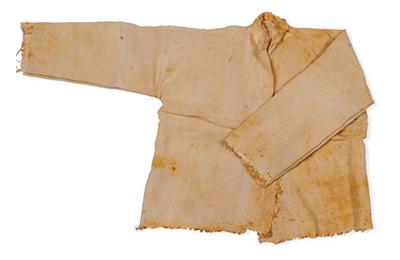
Clothing worn during the refuge period (Donated by Lee Ki-hwal)
This garment was worn by a doner who fled to Busan during Korean War. Uniquely, the garment was fastened with a one-yen Japanese coin instead of the traditional otgoreum (coat string). After the Korean War broke out, around 400,000 displaced people sought safety in Busan. The refugee camps, however, were severely overcrowded and lacked basic necessities such as electricity and clean water, worsening the refugees’ hardships.
This piece of clothing serves as a poignant testament to the struggles endured by those who lived through this difficult period, -
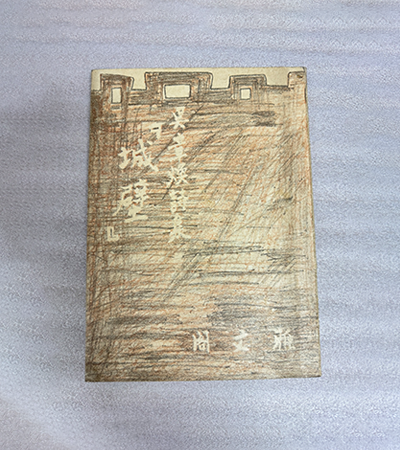
The Rampart (Poetry Collection, Donated by Kim Jin-young)
This is a 1947 reprint of the Rampart, a collection of poems by Oh Jang-hwan. Born in Hoein, Chungbuk, Oh Jang-hwan attended Whimoon High School before enrolling in the specialized department of Meiji University in Tokyo, Japan. He later left the university before graduating and returned to Korea.
While attending Whimoon High School, Oh Jang-hwan made his literary debut in November 1933 with the publication of his prose poem “Bathing Compartment” in Korean Literature. He became active in literary circles by joining the Poet Village and Romance coterie in 1936, followed by the Meridian coterie in 1937, marking the beginning of his full-fledged literary career. Following liberation and during a time of ideological realignment, he emerged as a leading poet within the Joseon Literary Artists’ Alliance before defecting to North Korea in late 1947.
The Rampart is the inaugural poetry collection by Oh Jang-hwan, first published by Punglimsa on August 10, 1937. The work predominantly utilizes prose-like rhythms to explore themes of decadence and decay in a diseased city, conveying a profound sense of despair and nihilism. The collection is organized into two sections and contains 16 poems across 27 pages. The reprinted edition features a preface by the author and an afterword by Lee Bong-gu, adding five additional stories to Part 1 and one more to Part 2, bringing the total to 22 stories. Unlike the original edition, this reprint features a cover designed and bound by the artist Choi Jae-deok. The Rampart is depicted across the front and back covers in a rough, sketch-like style, resembling pencil scribbles. -
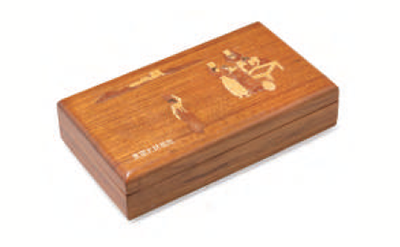
Dongmyeong Wood, Wooden Storage Box (Donated by Kim Jin-young)
This is a wooden storage box made by Dongmyeong Wood. Busan was an ideal location for importing and processing tropical Nawang wood, a raw material, through Busan Port. Taking advantage of Busan’s favorable geographic conditions, Dongmyeong Wood, originally established in Jwacheon-dong in 1925, was renamed Dongmyeong Wood Sawmill in 1949. In 1960, the company went on to build its first plywood factory in Yongdang-dong, Busan. In 1961, the company began exporting plywood for the first time, and by 1978, it had become the nation's leading exporter, firmly establishing itself as a major enterprise representing Busan.
-
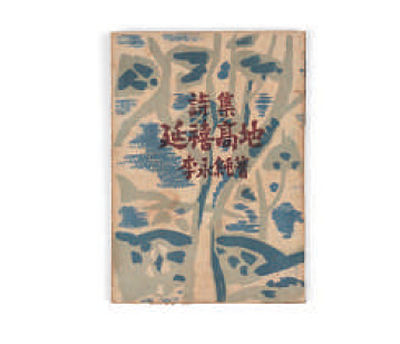
Yeonhwigoji (延禧高地) (Donated by Kim Eul-ho)
Lee Young-soon, a poet and novelist, was born in Yeongdong, Chungbuk. In 1941, he entered the Department of Economics at Tokyo Imperial University, and in 1943, he was drafted into military service as a conscripted student soldier. After Korea’s liberation, he returned home and published his first two novels, Bunyeon (憤煙) and Yuktan (肉彈), in 1947 in the Jeonnam Ilbo and Seoul Shinmun, respectively. During the Korean War, he served as a liaison officer for the U.S. Eighth Army, participating in the landing operations at Incheon and Wonsan. In 1951, during the war, he published Yeonhwigoji (延禧高地), a collection of poems about his experiences in the Korean War.
The poetry collection comprises 13 works and features Jeojasocho (著者疏抄), illustrated by artist Gu Bon-woong on the inside cover. It is followed by the table of contents, poems such as Chuljinbu, Saegiui Begeuk (Tragedy of the Century) and Bal (跋) by Kim Yong-je. Yeonhwigoji (廷禧高地) is a wartime poetry collection published during the Korean War. Its significance lies in its vivid portrayal of the battlefield, written by a veteran who experienced it firsthand. -
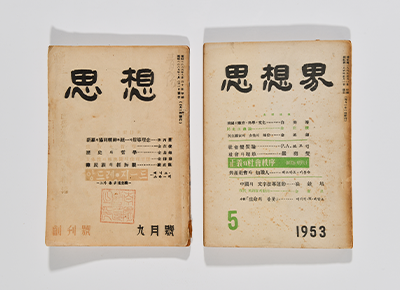
Sasang (思想)and Sasanggye (思想界) (Donated by Lee Eun-chang)
Sasang was established in August 1952 in Busan as the official publication of the National Ideology Research Institute, under the Ministry of Education. It aimed to guide the intellectual thought movement during wartime by promoting national unity and fostering an anti-communist spirit amid the Korean War. However, when President Rhee Syngman, unhappy with its dominance by intellectuals critical of him, shut it down, Jang Jun-ha, who had been involved in its editing, took over in April 1953 and resumed publication under the new title Sasanggye (思想界). From that point onward, the magazine expanded beyond liberal arts to include ideas (sasang (思想)), ideologies, and political critiques that deeply reflected the spirit of the times. Later joined by prominent intellectuals such as Ham Seok-heon, Ahn Byung-wook, Kim Jun-yup, and Kim Sung-han, Sasanggye became a symbol of intellectual discourse. However, in May 1970, it was shut down with issue 205 following the publication of Kim Ji-ha’s poem Ojeok (五賊) or Five Enemies.
-
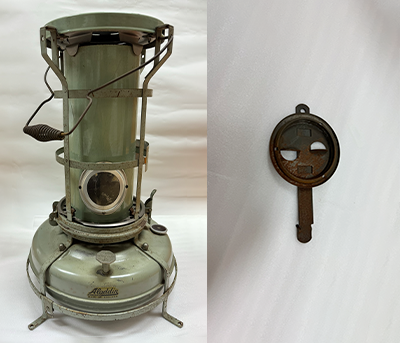
Heater and Wick Cleaning Tool (Donated by Lee Jung-sook)
The heater and wick cleaning tool was a wedding gift in 1952 from the donor’s brother-in-law. The donor, a former commando in the Korean War, had recently returned to Busan at the time. The heater is a Blue Flame Heater, model No. H2201, manufactured by Aladdin in the United Kingdom. The specific manufacturer and product name are identifiable. This model was produced in local factories across more than 20 countries during the 1950s and early 1960s, and it was distributed throughout Asia, the Middle East, South America, North America, and Europe. The heater’s entire fuel canister, both top and bottom, are made of brass and are designed to use a 3-inch wick and bore size.
-

Commemorative Wedding Photo Album (Donated by Hwang, Soon-hwa)
This wedding photo album belonged to the donor’s parents, Hwang Hyung-geun and Park Young-ok. The cover is made of black leatherette, and the interior consists of photo paper mounted on paper, totaling 39 pages. The wedding commemorative photo album captures the full wedding ceremony of a middle-class family in Daegu during the mid-1950s. It begins with the wedding invitation and includes views of Daegu city, the exterior and interior of the wedding venue, the guests, and the reception. The second half of the album features photos of his wife, Park Young-ok, during her time as a student at Ewha Womans University’s wartime campus in Busan, along with images of the couple’s daily life and their children’s growth after relocating from Seoul to Busan.